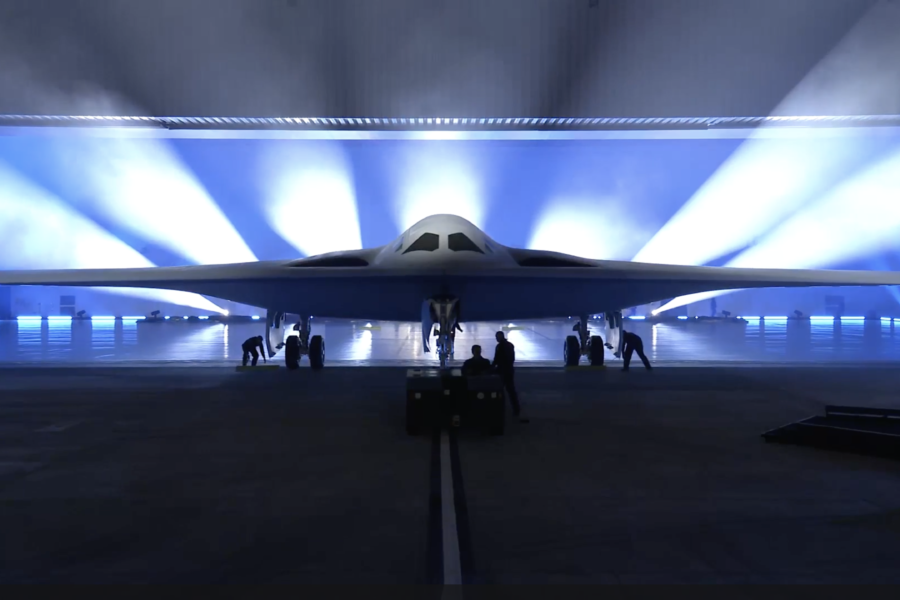The B-21 Raider is a developmental, penetrating strike bomber planned to deliver both conventional and nuclear munitions. The low-observable flying-wing design was christened “Raider” in honor of the WWII Doolittle Raiders, who mounted the surprise attack on Japan in April 1942.
Though similar in shape to the B-2, the B-21 features more deeply recessed engine inlets, dual-wheel main-landing gear, unique trapezoidal windscreens, and more advanced low-observable designs.
The Air Force awarded Northrop Grumman the Long-Range Strike Bomber contract in 2015, aimed at developing an affordable, next-generation stealth bomber utilizing modern systems and materials. The type is the Air Force’s first new bomber design since the B-2 Spirit, introduced in 1988, and is planned to become the mainstay of the strategic fleet alongside the modernized B-52J.
USAF is developing the B-21 as part of a “family of systems” encompassing complementary ISR, C2, and electronic warfare platforms and capabilities designed for survivability in high-end threat environments. Northrop Grumman is using digital design techniques to quickly incorporate changes and speed fielding, as well as an open-system architecture to easily enable future upgrades and modernization.
Notional nuclear armament includes the planned Long-Range Standoff (LRSO) missile and B61-12 guided free-fall weapons, as well as a range of advanced conventional weapons.
AFGSC plans to acquire a fleet of at least 100 B-21s would be delivered starting in the mid-2020s. Concurrent development and low-rate initial production aim to accelerate fielding, starting with the first LRIP contract awarded in late 2023. LRIP will notionally include 21 aircraft over five lots, followed by full-rate production as soon as FY25.
At least six airframes are in production at Northrop Grumman’s Palmdale, Calif., facility where the initial aircraft was unveiled to the public in December 2022. The first aircraft completed ground testing and taxi trials at Palmdale, before making the type’s first flight on Nov. 10, 2023, en route to Edwards. The aircraft, dubbed “Cerberus,” launched flight-testing there on Jan. 17, 2024, and will continue development and flight-testing. Initial operational aircraft will be delivered to AFGSC’s formal training and operational units at Ellsworth, followed by Whiteman and Dyess.
Contractor: Northrop Grumman (aircraft); Pratt & Whitney (engines); Collins Aerospace; GKN Aerospace; BAE Systems; Spirit Aerosystems; Janicki Industries (advanced structures).
First Flight: Nov. 10, 2023
Delivered: Nov. 10, 2023-present
Production: ≥100 (projected)
Inventory: 1
Operator: AFMC. Planned: AFGSC
Aircraft Location: Edwards AFB, Calif. (test location); Planned: Ellsworth AFB, N.D.; Whiteman AFB, Mo.; Dyess AFB, Texas.
Active Variant: B-21. Developmental Long-Range Strike Bomber.
Dimensions: Span 140 ft. (estimated, approximate), Length 55 ft (estimated, approximate), Height 18 ft. (estimated, approximate)
Weight: Max T-O unknown.
Powerplant: Undisclosed number of Pratt & Whitney turbofans.
Performance: Speed high-subsonic (estimated), range intercontinental.
Armament: Nuclear and conventional (planned)
Accommodation: Two pilots; autonomous control (planned).
